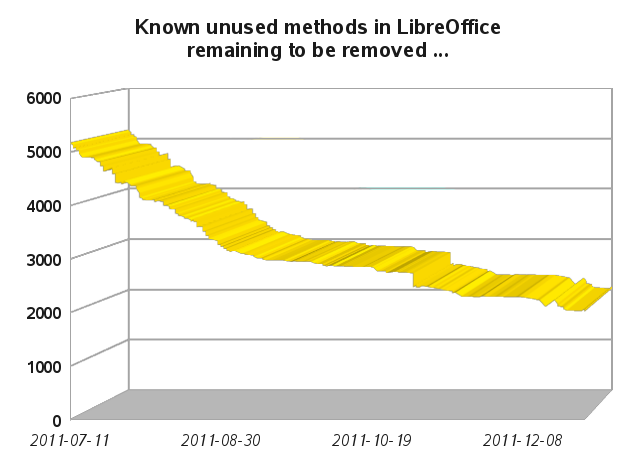One of the unfortunate things that LibreOffice inherited, as part
of the several decades worth of unpaid technical debt, is unused code that
has been left lying around indefinitely. This was particularly unhelpful
when mingled with the weight and depth of the useful code we have around
the place. Caolan McNamara of RedHat wrote a beautiful tool callcatcher that
identified these unused methods, and in recent times in LibreOffice we've had an unusedcode.easy
file in our toplevel with a list of methods that should be removed. It's pretty
easy to find and expunge a method or two, with a quick git grep,
and dropping a patch to the developers
mailing list. To escape from a pile of administration recently, I knocked up a pretty nasty
perl script to parse the git numstat output, to see how we're doing. That
produces a fun graph:

It seems that over half of our unused code has now bitten the dust. Uunfortunately as we remove more, more wasteage tends to be revealed, which explains some of the upward jumps in the graph, nevertheless the trend is clearly down. One of the side benefits of the unsung heros working at the conversion of our old-style macro driven generics to modern STL is that this looses us several unused methods per class converted.
If you want to get involved with LibreOffice development, it doesn't get much easier than this - please do check out the code and have a go. For the more adventurous finding an unused destructor, without a matching unused constructor is proof of a leak that needs chasing, of which there are a handful.
Failing that, why not run Caolan's callcatcher over your project to see which nooks and crannies are surplus to requirements.
